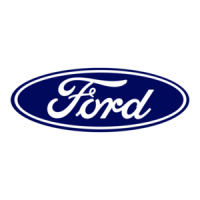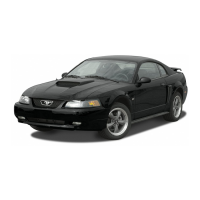Do you have a question about the Ford Model T 1926 and is the answer not in the manual?
Ensuring proper radiator filling, gasoline supply, and engine oil levels before operation.
Understanding spark/throttle levers and initial engine starting procedures.
Techniques for starting in cold weather and the function of the hand lever.
Operation of foot pedals, car stopping, reversing, and speed adjustments.
Guidance on owner-made adjustments and attention needed for new cars.
Explains the gasoline engine principle and the role of pistons in combustion.
Procedure for removing and adjusting connecting rods, including bearing wear.
Details on valve setup, timing, and necessary adjustments for engine performance.
Addressing valve wear, spring function, and diagnosing engine knock causes.
Procedures for cleaning combustion chambers and spark plugs.
Step-by-step instructions for removing the engine and adjusting crankshaft bearings.
Explains the cooling system and identifies factors causing engine overheating.
Procedures for radiator care, overheating response, and freeze prevention.
Methods for repairing leaks and jams in radiator tubes.
How the carburetor works and why its adjustment is on the instrument board.
Definitions of lean/rich mixtures and troubleshooting carburetor problems.
Adjusting throttle, hot air pipe purpose, float function, and priming.
The role of the ignition system and how the magneto generates current.
Advice on coil vibrator adjustment and identifying weak ignition units.
Detecting short circuits in wiring and how coil adjustment affects starting.
The purpose of the commutator and its proper upkeep.
Spark plug maintenance and identifying symptoms of ignition system problems.
Methods for identifying which cylinder is misfiring in the engine.
Diagnosing problems when coils and plugs are correct, including compression checks.
Procedures for removing the commutator and addressing magneto malfunctions.
Explains the role of the transmission and the planetary gear mechanism.
The function of the clutch and how it is controlled via pedals and levers.
Step-by-step guide for adjusting the clutch mechanism.
Instructions for adjusting and removing transmission bands.
Detailed steps for assembling the transmission components.
Detailed steps for removing the rear axle assembly from the car.
Procedures for disconnecting drive shafts, disassembling axles, and removing gears.
Explains the muffler's purpose and how to disconnect it.
Care for running gear and procedures for removing the front axle assembly.
Advice on straightening bent front axles and maintenance of front wheels.
Methods for removing wheels and replacing emergency brake shoes.
Differences in front/rear wheel settings and roller bearing installation.
Lubrication schedules for bearings, spring care, and spring clip tightness.
Maintenance of the steering apparatus and how to tighten a loose steering gear.
How the Ford system differs and recommendations for oil and grease.
Best practices for filling lubricant cups and draining engine oil.
Importance of commutator oiling and proper differential lubrication.
Care for tires, including removal, repair, and puncture fixing.
Proper methods for washing the car and storing it for periods.
Applicability of car instructions to trucks and truck axle/worm removal.
Removing truck differential gears and lubricating the rear axle.
Overview of starting/lighting system and starter motor function and issues.
How the generator works and its lubrication needs.
Steps for ignition repair and how the ammeter indicates charge status.
How lights operate and the attention electric headlights require.
Procedures for installing headlight lenses and replacing burnt-out bulbs.
How to properly focus headlights for optimal road illumination.
Methods for aligning headlights to meet road visibility standards.
Advice on when to consult dealers for starter and generator repairs.
Step-by-step instructions for removing the starter motor from the car.
Assembling starter drive and removing the generator.
Replacing generators, running engine without battery, and hydrometer readings.
Guidance on adding water to the battery and maintaining connections.
Ensuring proper radiator filling, gasoline supply, and engine oil levels before operation.
Understanding spark/throttle levers and initial engine starting procedures.
Techniques for starting in cold weather and the function of the hand lever.
Operation of foot pedals, car stopping, reversing, and speed adjustments.
Guidance on owner-made adjustments and attention needed for new cars.
Explains the gasoline engine principle and the role of pistons in combustion.
Procedure for removing and adjusting connecting rods, including bearing wear.
Details on valve setup, timing, and necessary adjustments for engine performance.
Addressing valve wear, spring function, and diagnosing engine knock causes.
Procedures for cleaning combustion chambers and spark plugs.
Step-by-step instructions for removing the engine and adjusting crankshaft bearings.
Explains the cooling system and identifies factors causing engine overheating.
Procedures for radiator care, overheating response, and freeze prevention.
Methods for repairing leaks and jams in radiator tubes.
How the carburetor works and why its adjustment is on the instrument board.
Definitions of lean/rich mixtures and troubleshooting carburetor problems.
Adjusting throttle, hot air pipe purpose, float function, and priming.
The role of the ignition system and how the magneto generates current.
Advice on coil vibrator adjustment and identifying weak ignition units.
Detecting short circuits in wiring and how coil adjustment affects starting.
The purpose of the commutator and its proper upkeep.
Spark plug maintenance and identifying symptoms of ignition system problems.
Methods for identifying which cylinder is misfiring in the engine.
Diagnosing problems when coils and plugs are correct, including compression checks.
Procedures for removing the commutator and addressing magneto malfunctions.
Explains the role of the transmission and the planetary gear mechanism.
The function of the clutch and how it is controlled via pedals and levers.
Step-by-step guide for adjusting the clutch mechanism.
Instructions for adjusting and removing transmission bands.
Detailed steps for assembling the transmission components.
Detailed steps for removing the rear axle assembly from the car.
Procedures for disconnecting drive shafts, disassembling axles, and removing gears.
Explains the muffler's purpose and how to disconnect it.
Care for running gear and procedures for removing the front axle assembly.
Advice on straightening bent front axles and maintenance of front wheels.
Methods for removing wheels and replacing emergency brake shoes.
Differences in front/rear wheel settings and roller bearing installation.
Lubrication schedules for bearings, spring care, and spring clip tightness.
Maintenance of the steering apparatus and how to tighten a loose steering gear.
How the Ford system differs and recommendations for oil and grease.
Best practices for filling lubricant cups and draining engine oil.
Importance of commutator oiling and proper differential lubrication.
Care for tires, including removal, repair, and puncture fixing.
Proper methods for washing the car and storing it for periods.
Applicability of car instructions to trucks and truck axle/worm removal.
Removing truck differential gears and lubricating the rear axle.
Overview of starting/lighting system and starter motor function and issues.
How the generator works and its lubrication needs.
Steps for ignition repair and how the ammeter indicates charge status.
How lights operate and the attention electric headlights require.
Procedures for installing headlight lenses and replacing burnt-out bulbs.
How to properly focus headlights for optimal road illumination.
Methods for aligning headlights to meet road visibility standards.
Advice on when to consult dealers for starter and generator repairs.
Step-by-step instructions for removing the starter motor from the car.
Assembling starter drive and removing the generator.
Replacing generators, running engine without battery, and hydrometer readings.
Guidance on adding water to the battery and maintaining connections.
| Brand | Ford |
|---|---|
| Model | Model T 1926 |
| Category | Automobile |
| Language | English |












